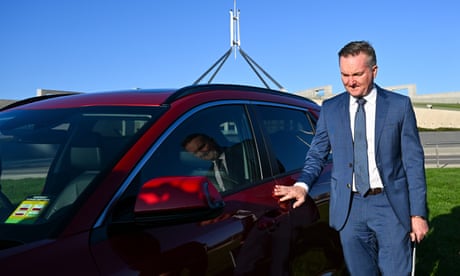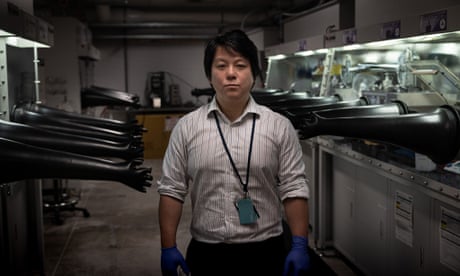Extract from The Guardian

Utes such as the Toyota Hilux are popular in Australia but they face tough emissions targets under the new vehicle efficiency standard (NVES).
Some SUVs and utes could cost more unless they clean up their act, while EVs could get cheaper under the new standards.
Wed 7 Feb 2024 01.00 AEDT
Last modified on Wed 7 Feb 2024 01.03 AEDTSome models could be discontinued or get more expensive, while more fuel efficient vehicles and EVs look set to be cheaper – and we’ll almost certainly have a broader range of hybrid and electric models to choose from.
While the proposed standard is yet to pass parliament – there are three options and a four-week consultation process – it’s expected to come into law in January 2025, providing tough targets that are set to change what propels the cars we buy in future.
“It’ll impact every company differently,” says Matt Hobbs, the CEO of the Motor Trades Association of Australia and a man who understands the industry intimately, having previously worked at the Federal Chamber of Automotive Industries and with the former market giant Holden.
“My assumption is every car company has been working since Sunday to run the numbers on their portfolio.”
At stake is the overall fleet emissions, with fuel efficient vehicles able to offset thirsty alternatives within a brand’s showrooms.
“It’s a ledger; think of a pair of scales,” Hobbs says. “You put really good cars on one side, then you can balance them out [against thirstier ones] … ultimately you have to make everything better.”
HiLux and Ranger at a crossroads
Hobbs describes the preferred NVES option B as “very ambitious” and rates it “a seven out of 10”, highlighting that it makes life particularly tough for the utes and off-road four-wheel drives so many Australians gravitate towards.
Last year 21% of all vehicles sold in Australia were utes, with many used as family transport.
The 2025 target of 199 grams of CO2 per kilometre for light commercial vehicles such as utes is met by today’s Toyota Hilux (197g/km for the auto 2.8-litre) and Ford Ranger (189g/km for the auto 2.0-litre) but by the time the 2029 target of 81g/km is implemented each has to slash about 60% off their current fuel use.
SUVs and passenger cars have tougher targets, with a Toyota LandCruiser’s 235 grams of CO2 per kilometre well above the 2025 target of about 175g/km (the target varies depending on the mass of the vehicle). By 2029 a LandCruiser would have to use about 75% less fuel, or about 2.3 litres of fuel per 100km.
Electric motors are the only way such vehicles will likely hit those targets, either as a hybrid or pure EV.
Every gram of CO2 per kilometre emitted over that limit would result in a $100 fine – for every car sold.
Today’s most popular Ranger would be up for something like a $10,000 fine in 2029, likely passed on to consumers.
The LandCruiser would be up for a circa-$5,000 penalty in 2025 rising to about $17,000 by 2029.
Long overdue
Not that carmakers weren’t aware change was coming, with many preparing for what the industry describes as long overdue fuel efficiency standards.
While declining to be interviewed, Toyota released a carefully worded statement.
“Toyota Australia supports the introduction of a mandatory fuel-efficiency standard that is ambitious, doesn’t leave Australians behind, is calibrated to the Australian market and allows carmakers to determine the appropriate mix of technologies to achieve it,” said Sean Hanley, Toyota Australia’s vice-president of sales and marketing.
Given the dominance the brand has in rural and remote areas there’s plenty at stake for a brand playing catch-up on EVs.
Hobbs says some brands have a tougher path.
“Anybody that’s selling utes and ute derivatives like a big SUV – and that’s all they sell – they’re going to have problems,” he says.
Clearly Ford is in that mix, as is Isuzu, which apart from trucks – currently excluded from the NVES proposal – only sells a ute and large SUV.
In 2023 89% of Ford sales locally were for the Ranger ute or the Everest, which uses the same engine and underpinnings.

Assuming customers won’t absorb $10,000 price rises, options include improving efficiency or reducing margins – with the former more likely.
Ford is one of many that has already committed to an electric and hybrid ute, the latter due late this year.
And Toyota is preparing to bolster its already dominant share of hybrids as it finally launches its first EV within weeks.
Australia’s second bestselling brand, Mazda, also has work to do. It has an ageing fleet and little in the hybrid and EV space, although the company said it “has a global strategy to transition to electrification by 2030”.
The company said it would “continue to assess the government’s position” and would “reserve comment” on whether some models could be dropped as a result of the NVES.
Cheaper EVs are on the way
There is help for some brands – and it should bring prices of efficient vehicles and EVs down.
Part of the NVES proposal is a credit trading scheme that takes into account overall sales. If a carmaker sells a thirsty model it can offset penalties with a credit from an EV or a more fuel efficient vehicle.
It gets more complex because manufacturers can carry forward credits and penalties for three years. Plus, carmakers can trade credits.
“Everybody has a wallet,” says Hobbs. “They either owe something to that wallet or I’ve got X amount of credits in that wallet.
“Overseas car companies speak to each other and they buy the credits off each other … this will have a similar trading scheme here.”

Last year Tesla globally reported almost US$1.8bn in regulatory credits on its balance sheet.
In the case of Toyota that’s a potential reprieve for the LandCruiser, Prado and Hilux – all of which have electrified variants under development.
The company’s growing hybrid sales could provide a credit buffer for those thirstier 4WDs that likely haul in healthy profits.
However, with Tesla, BYD and Polestar – three EV-only brands – able to sell their credits, they can theoretically use them to make their cars more affordable, piling more pressure on the soon-to-arrive Toyota bZ4X EV that is expected to arrive with a premium price tag.
“This will make electric vehicles cheaper,” says Behyad Jafari, CEO of the Electric Vehicle Council, who says it will “open the flood gates” and not only give Australians more choice but also more affordable models.
“It will introduce more competition,” he says, arguing consumers will ultimately win in what is shaping up to be the biggest change to the car market in decades.
Hobbs agrees, saying the NVES “will bring a whole lot more volume, a whole lot more variety of fuel-efficient vehicles”.


No comments:
Post a Comment